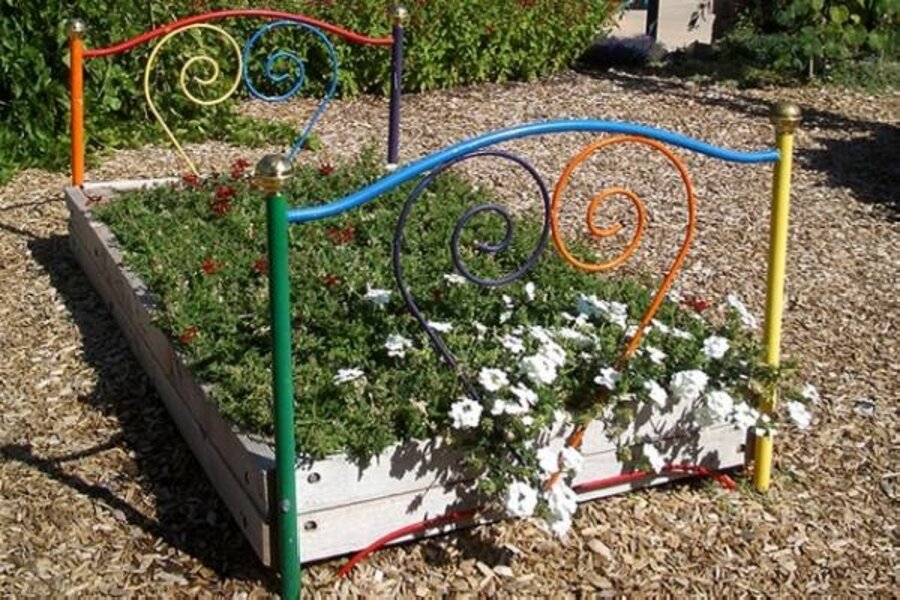Gardening basics for youngsters
Loading...
| WASHINGTON
One of the best ways to interest children in plants is to start working with them when they are young and curious, and there's no better time to begin than the dog days of August, after summer camp ends and before school starts.
Teaching gardening basics to youngsters is not complicated, and it can be a lot of fun for little ones and their parents. Here are some ways to make the most of the waning days of summer — indoors and out.
Start by giving your children their own outdoor gardening space. It shouldn't be too large to manage but should be big enough for them to do what they do best — play. Give them fast-growing edibles to plant from seed, emphasizing that they can do anything they like with the area. If your youngsters want to try to build a patio or a fishpond there, that's what they should be doing.
In some areas of the country, August is a good month for planting trees and shrubs. It's also time to start a second crop of cool season lettuces, cabbage, broccoli, radishes, garlic, snap peas, endive, spinach, collards, and other greens. Preparing, watering, and weeding fall edible gardens creates pride in children. You will be feeding your family well into fall.
Of course, gardening is a lot more than putting plants into the ground. You'll need to instill lessons on other crucial landscaping skills. Along the way, you may learn a few tricks yourself.
Remember to teach soil preparation to your little ones. Dry soil creeps up when you're least expecting it. As temperatures climb, soil moisture evaporation occurs rapidly. So, incorporate lots of compost to drain and enrich the growing medium, up to one-third compost to two-thirds native soil. If you do not have enough compost on site, look for Leafgro or another good commercial compost.
Soil preparation involves lots of digging and mixing, which will probably be a lot of fun for children.
You also should show your children how to properly water plants. A gentle flow minimizes damage to roots. Water pressure should be light enough to flow onto the soil and percolate into the root zone. You don't want water delivering a hard spray that cuts holes into beds, runs off and erodes soil. It is generally not necessary to water the foliage of most plants.
To ensure that they water to the correct depth, teach youngsters to check moisture levels. A finger is still the best indicator. But, if you want to know how deeply water percolated, probe with a wooden dowel.
Watering can be accomplished one plant at a time. During dry spells, this will keep children occupied for long periods of time.
You can also use sprinklers. More water is lost to evaporation, but your children will love running through the spray. A good rule of thumb is that catching one inch of water in a shallow can or saucer set under the sprinkler is usually enough to penetrate into soil four to eight inches, depending on soil type. Sand can percolate deeply and quickly but does not hold moisture like soil high in organic material.
Older children may be ready to learn the art of deadheading, the careful removal of faded flowers. In some plants, such as hybrid tea roses, depending on how they grow, the work might have to be done with hand pruners. Parents will be the best judge about whether their children are ready to handle sharp garden tools.
Planted containers of color can be fun to create. Look for leftover annuals at garden centers, or cool-season flowers such as pansies and mums. Tuberous and hardy begonias or fall-blooming perennials will return next year. Fertilize when watering with a water-soluble fertilizer until October if plants continue to grow. The efforts will be rewarded next year when the plants begin to grow again.
Resources for young gardeners
Nurturing a child's interest in plants is easy, especially this time of year. Your home garden is one resource. Others are family and children's programs at parks, public and private gardens, books, and on the Internet. Here is a sampling:
– The US Botanic Garden has a children's page, www.usbg.gov/forkids.cfm.
– Gardening for Kids, www.geocities.com/EnchantedForest/Glade/3313/index.html
– KidsGardening.com, www.kidsgardening.com
– Children's Indoor Gardening Projects, www.humeseeds.com/kids.htm
– Junior Master Gardener, www.jmgkids.us/
Joel Lerner is president of Environmental Design in Capitol View Park, Md., and author of "Anyone Can Landscape"(Ball 2001). Contact him through his Web site, www.gardenlerner.com.
Editor’s note: For more on gardening, see the Monitor’s main gardening page. Our blog archive. Our RSS feed.
You may also want to visit Gardening With the Monitor on Flickr. If you join the group (it’s free), you can upload your garden photos — and possibly win a prize. Deadline is Aug. 11. Join the discussions and get answers to your gardening questions.





